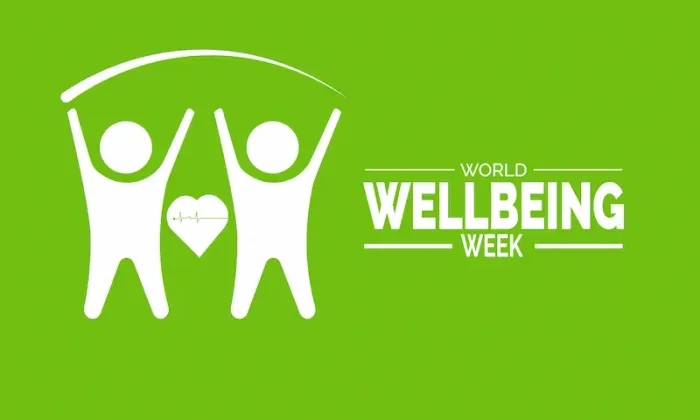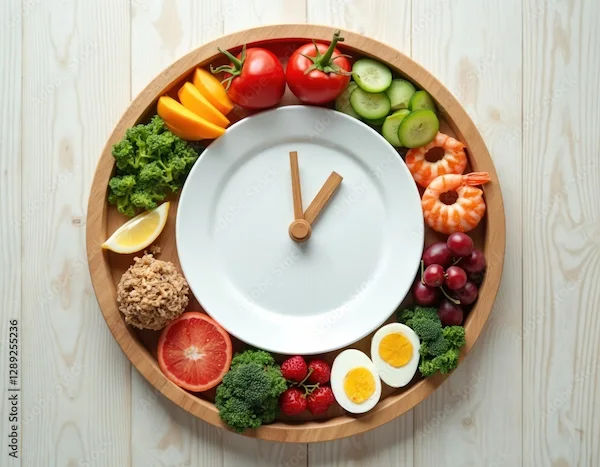Guide to World Well Being Week
Learn about World Well-Being Week, its purpose, and practical ideas for promoting mental, physical, and financial wellness in your workplace, community, or personal life.


Introduction
If you’ve ever wished for a reason to hit reset on your health and happiness, World Wellbeing Week is your moment. Held each year in late June, this global celebration shines a spotlight on the habits—big and small—that help us feel better, function better, and build stronger communities. Whether you’re an individual seeking simple, evidence-based steps, a parent hoping to spark healthy routines at home, or a manager planning engaging activities for your team, this guide will help you make the most of the week.
We’ll break down the pillars of wellbeing, share a ready-to-use plan for work and home, and ground everything in credible research. You’ll find practical tips on movement, sleep, nutrition, mental health, social connection, and even financial wellbeing—plus templates, checklists, and ways to keep your momentum going well beyond the week. World Wellbeing Week is about celebrating progress, not perfection. Let’s craft a plan that meets you where you are, honors your culture and context, and helps you thrive—this week and every week.
What Is World Wellbeing Week?
World Wellbeing Week is an annual, global celebration designed to spotlight the many dimensions of wellbeing—from mental and physical health to meaningful work, community connection, and financial stability. Founded by WellBeing World in Jersey, the week encourages individuals, workplaces, schools, and community groups to try practical activities, share lessons learned, and champion wellbeing stories across the world [1]. Awareness hubs and calendars help people find dates, plan events, and discover ideas for participation every year [2][3][4].
Origins and Purpose
The initiative began as a way to bring together diverse wellbeing efforts under a single, accessible banner. The purpose is twofold: to inspire action through simple, inclusive activities and to create a platform for sharing what works across cultures and contexts [1].
When It Happens (and How to Join In)
World Wellbeing Week typically takes place in the last week of June. You can join in by hosting or attending local events, running workplace activities, sharing your story on social media, or simply setting a personal challenge for the week [2][3][4].
Why It Matters for You, Your Work, and Your Community
Beyond the feel-good factor, wellbeing is tied to lower risk of chronic disease, improved sleep and mood, stronger relationships, and better performance at work. The week creates a shared “start line” that makes it easier to begin, experiment, and build healthier habits for the long term [5][6][10][11].Consult a Top Psychologist
The Five Pillars of Wellbeing (and How They Interconnect)
Think of wellbeing as a web, not a stack of silos. Improvements in one area often ripple into others.
Mental and Emotional Health
Practices like mindfulness, cognitive reframing, therapy, and peer support improve mood and resilience. Even short breathing exercises can modulate stress responses.
Physical Health and Lifestyle
Movement, nutrition, and sleep are the backbone of vitality and disease prevention. Small changes—daily walks, balanced meals, consistent bedtimes—compound quickly [5][6][7]
.Social Connection
Strong relationships provide emotional support, buffer stress, and are associated with longer life and better mental health [9].
Financial Wellbeing
Budgeting, debt management, and emergency funds reduce chronic stress and improve decision-making. Money stress is common; simple frameworks help.
Purpose, Meaning, and Growth
Contribution, learning, and values-aligned goals increase life satisfaction and protect against burnout.
Micro-habits that Build Momentum Across Pillars
• - 2-minute breathing breaks between meetings (mental/physical).
• - 10-minute post-meal walks (physical/metabolic).
• - Weekly “reach-out” text to a friend (social).
• - Auto-transfer to a savings pot (financial).
• - Weekly reflection: “What mattered most this week?” (purpose).
Evidence Snapshot: Why Investing in Wellbeing Works
Evidence shows that basic lifestyle shifts are powerful and achievable.
Public Health and Longevity (activity, sleep, nutrition)
• - Physical activity: Adults should aim for 150–300 minutes of moderate activity weekly; this reduces risk of mortality, cardiovascular disease, and diabetes [5]. A simple 30-minute brisk walk five days per week counts (long-tail: physical activity guidelines for adults).
• - Sleep: Adults generally need 7+ hours nightly; insufficient sleep is linked with obesity, diabetes, hypertension, depression, and impairment [6]. Sleep hygiene—consistent timing, dark/cool rooms, and device curfews—works.
• - Nutrition: Balanced, minimally processed, plant-forward eating patterns are associated with lower cardiovascular risk. Use the Healthy Eating Plate as a simple template [7].
Workplace ROI and Productivity
Workplace wellbeing initiatives are associated with reduced absenteeism and improved retention. For example, Deloitte’s UK analysis shows a positive return on investment for mental health initiatives, with data indicating these programs can yield net benefits for employers through reduced turnover and sickness absence [10]. CIPD reports that organizations with a strategic wellbeing approach often see better attendance and performance outcomes [11] (long-tail: workplace mental health resources).
Social Connection and Community Health
The U.S. Surgeon General’s Advisory underscores that social disconnection is a significant health risk, comparable to other established risk factors, and improving connection supports mental and physical health [9]. Nature exposure is also associated with better wellbeing; spending about 120 minutes per week in nature correlates with higher self-reported health and life satisfaction [8].
Celebrate at Work: A Ready-to-Use One-Week Plan
Design activities that are inclusive, time-efficient, and hybrid-friendly. Aim for 15–30 minutes daily, plus one optional community event.
Day-by-Day Activities (Hybrid-Friendly)
• - Monday: Kickoff and intention-setting
• - 15-minute virtual town hall to set the theme and share the schedule.
• - Micro-survey: “How are you doing today?” (1–5 scale).
• - Tuesday: Move more, sit less
• - 20-minute group stretch or walk. Encourage “walking meetings.”
• - Wednesday: Food and focus
• - 25-minute “smart snacking” session with a dietitian or internal health champion. Share a one-page “Healthy Plate” guide [7].
• - Thursday: Stress and sleep
• - 15-minute breathing + sleep hygiene micro-class. Distribute a “Sleep Checklist” (long-tail: sleep hygiene checklist).
• - Friday: Connection and purpose
• - 30-minute gratitude circle or peer recognition wall. Invite a volunteer from a local nonprofit to speak.
• - Weekend (optional): Community and nature
• - Encourage a 60-minute nature walk challenge; share photos and reflections on a company channel [8].
Inclusive Ideas for Diverse Teams
• Offer camera-optional sessions, asynchronous resources, and translated materials. Encourage culturally adaptable recipes and movement options (chair yoga to higher-intensity intervals). Provide quiet rooms and prayer spaces where possible.
Measuring Impact (Simple Metrics and Surveys)
• - Pulse surveys (start and end of the week).
• - Participation counts (live and async).
• - Self-reported stress and energy levels.
• - Optional: Track absenteeism or attrition over time to assess longer-term effects [10][11] (long-tail: how to measure wellbeing at work).
Remote-First Adaptations
• Use chat-based challenges, flexible schedules, and micro-learning modules people can do in 10 minutes. Encourage “focus blocks” and calendar buffers.
Celebrate at Home: Family and Personal Wellbeing
Turn the week into a household reset with small, repeatable wins.
A 7-Day Self-Care Routine You Can Keep
• - Daily: 10–15 minutes of movement (walk, stretch, dance), 2-minute breathing, and 10-minute wind-down before bed.
• - Two nutrition wins: Add one vegetable to lunch and dinner; hydrate with water first thing in the morning.
• - One social reach-out: Call or message someone meaningful.
• - Weekly reflection: One line in a journal—“What helped me feel well today?” (long-tail: self-care routine ideas).
Family Activities (From Toddlers to Teens)
• - Cook together once; let kids assemble a “rainbow” plate.
• - Family walk-and-talk: One hour outdoors if possible [8].
• - Gratitude jar: Each person notes one good thing daily.
• - Create tech-free zones at dinner and 30 minutes before bedtime.
Digital Wellbeing and Healthy Boundaries
• Try a “digital sunset” (no screens) 30–60 minutes before sleep. Curate your feeds (mute/limit accounts that spike stress), batch notifications, and schedule “scroll windows” rather than grazing all day. APA’s Stress in America reports highlight the link between constant connectivity and stress, especially among younger populations [15] (long-tail: digital detox plan for families).
Schools and Communities: Low-Cost, High-Impact Ideas
School Activities that Teach Life Skills
• - Five-day micro-lessons: emotions, movement, nutrition, sleep, kindness.
• - “Movement minute” every class hour.
• - Peer support circles and gratitude walls.
• - Lunch-and-learn with a local health professional (dietitian, counselor).
Community Events and Volunteering
• Neighborhood clean-up plus park stroll.
• Skill-sharing swap (budgeting, cooking on a budget, home workouts).
• Volunteer hour: Research suggests volunteering is associated with higher wellbeing and reduced depression risk over time.
Partnering with Local Health and Social Groups
• Invite local clinics, NGOs, and fitness groups. Provide signposting to helplines and reputable resources (long-tail: community wellbeing events).
Nutrition That Supports Wellbeing
Nutrition doesn’t have to be complicated. Keep it practical and culturally flexible.
Build-Your-Plate Basics (No-Fuss, Balanced Meals)
• Use the Healthy Eating Plate as a template: half vegetables and fruits, a quarter whole grains, a quarter healthy proteins, plus healthy fats and water [7] (long-tail: nutrition for wellbeing).
Hydration, Snacking, and Cultural Adaptations
• Hydration: Keep a water bottle handy. Flavor with citrus or herbs if helpful.
• Smart snacks: Fruit + nuts; yogurt + seeds; hummus + veg sticks.
• Cultural favorites: Embrace traditional dishes—adjust portion sizes, add vegetables, and use minimal ultra-processed ingredients.
Meal Planning for the Week
Pick two simple breakfasts, two lunches, and three dinners you can rotate. Batch-cook staples (grains, beans). If you have specific deficiencies or conditions, ask your clinician if nutrient testing (e.g., vitamin D, HbA1c) is appropriate; Apollo 24|7 offers a convenient home collection for common labs.
Move, Sleep, Breathe: The Foundations
A Simple Activity Plan (Beginner to Intermediate)
• Beginner: 10–15 minutes daily of brisk walking, adding light mobility.
• Intermediate: 30 minutes moderate activity 5 days/week, plus 2 days of strength training [5]. Track minutes, not perfection.
Sleep Hygiene That Actually Sticks
• Regular schedule: Same sleep/wake times, even weekends.
• Wind-down: 20–30 minutes of low-stimulation routine (stretch, read).
• Environment: Cool, dark, quiet; limit caffeine after midday [6].
• If sleep problems persist beyond two weeks, consult a doctor online with Apollo 24|7 for further evaluation.
Mindfulness and Breathing Techniques
• Try the 4-6 breathing pattern (inhale 4 seconds, exhale 6 seconds) for 2 minutes after meetings or before sleep. Pair with a brief body scan for extra calm.
Mental Health: Recognize, Respond, and Reach Out
Common Signs and When to Seek Help
• Look for persistent low mood, anhedonia (loss of interest), sleep changes, fatigue, difficulty concentrating, or escalating worry lasting two weeks or more. Early support can shorten recovery time.
First Aid for Stress and Anxiety
• Grounding: Name 5 things you see/4 feel/3 hear/2 smell/1 taste.
• Thought labeling: “I’m noticing a worry about X,” then gently refocus.
• Support network: Share with a trusted person; schedule a check-in.
Online Support, Helplines, and Professional Care
• Use reputable resources (NHS “5 steps to mental wellbeing” [14]) and local helplines. If symptoms persist beyond two weeks, consult a doctor online with Apollo 24|7 for further evaluation. If urgent or severe (e.g., thoughts of self-harm), seek emergency care immediately.
Financial Wellbeing 101
Budgeting Without the Burnout
• 50/30/20 (needs/wants/saving-debt) as a starting point.
• Automate transfers on payday; use simple, free budgeting apps.
Tackling Debt and Money Stress
• List debts with interest rates; consider snowball or avalanche methods.
• Contact lenders early if struggling; many offer hardship options.
Micro-Saving and Safety Nets
• - Build a starter emergency fund (e.g., one month’s expenses) via micro-savings (rounded transactions or weekly auto-saves). Reducing money stress often improves sleep and mental clarity.
Healthy Connections: Loneliness, Social Media, and Belonging
Building Real-World Connections
Plan one meaningful interaction daily: a walk with a neighbor, a phone call, or joining a club. The Surgeon General highlights the health risks of chronic disconnection and the benefits of social ties [9].
Social Media Hygiene and Digital Detox Tips
• Create “connection windows” instead of continuous scrolling.
• Unfollow accounts that increase anxiety; prioritize supportive communities.
• Try a 24-hour detox on the weekend; journal how you feel afterward (long-tail: stress management techniques at home).
Nature and the Outdoors: A Powerful Boost
The 120-Minute Rule for Nature
• Research indicates that about 120 minutes per week in nature is associated with better health and wellbeing [8]. Break it up: 20 minutes daily in a park or garden.
Greening Your Workplace or School
• Add indoor plants, window views, or green wall posters. Try outdoor meetings when feasible. Organize a weekly “green break” walk.
Measure and Sustain Your Wellbeing Beyond the Week
Personal Scorecards and Habit Stacking
• Track 3–5 behaviors (e.g., steps, veggies, bedtime, social check-in). Stack new habits onto existing routines (e.g., breathing break after lunch).
Team Dashboards and Continuous Improvement
• Use anonymous pulse checks (stress 1–5, energy 1–5). Review monthly, refine activities, and celebrate small wins.
Keeping Motivation High
• Focus on identity-based habits: “I am a person who moves daily.” Tie behaviors to values and purpose.
Toolkits and Templates
One-Week Calendar (Work, Home, School)
Pre-filled daily themes with flexible timing.
Sleep Hygiene Checklist
Environment, routine, timing, substance use, wind-down practices.
Manager/Teacher Email Templates
Announcements, reminders, and appreciation notes.
Myths and Mistakes to Avoid
Common Myths About Wellbeing
• Myth: “Wellbeing is just yoga and fruit.” Reality: It’s multidimensional (mental, physical, social, financial, purpose).
• Myth: “If it’s not 60 minutes, it doesn’t count.” Reality: Short bouts add up [5].
Pitfalls That Derail Progress—and How to Fix Them
• All-or-nothing thinking: Start tiny; scale later.
• Over-scheduling: Keep sessions 15–30 minutes.
• Ignoring diversity: Offer multiple options and cultural flexibility.
Resources and Support
Trusted Guides and Evidence Hubs
• WHO physical activity guidelines.
• CDC sleep and health.
• Harvard Healthy Eating Plate.
• Surgeon General’s Advisory on social connection.
• World Happiness Report.
• Global Wellness Institute research.
• NHS “5 steps to mental wellbeing”.
Apps, Podcasts, and Courses
Look for science-backed tools with privacy safeguards. Consider mindfulness, CBT-based, or habit-tracking apps that respect data security.
When to Seek Clinical Care?
If mood, sleep, anxiety, or pain issues persist beyond two weeks or affect daily functioning, consult a clinician. If your condition does not improve after trying these methods, book a physical visit to a doctor with Apollo 24|7. If lab tests are relevant (e.g., vitamin D, HbA1c), Apollo 24|7 offers a convenient home collection.
Conclusion
World Wellbeing Week is more than a date on the calendar—it’s a practical invitation to build a healthier, happier life. By focusing on small, doable steps across the five pillars—mental and emotional health, physical health, social connection, financial wellbeing, and purpose—you can create ripple effects that last well beyond a single week. The evidence is clear: consistent movement, quality sleep, balanced nutrition, strong relationships, and stress management improve health, mood, and performance at work and home. And when communities and workplaces participate together, the benefits multiply.
Use the ready-to-go plans, checklists, and templates in this guide to keep it simple. Track only a few metrics, celebrate small wins, and adapt activities to your culture, schedule, and preferences. If you find that certain symptoms or stressors persist, don’t wait—reach out to a health professional. Apollo 24|7 can help with online consultations and, when needed, convenient home lab collections.
This week is a start, not a finish line. Choose one habit you can keep doing next week, and then another. With each small step, you reinforce the identity of someone who takes care of their wellbeing—and that’s a powerful momentum you can carry through the rest of the year.Consult a Top Psychologist
Consult a Top Psychologist

Miss. Vaishnavi Sankeshwar
Psychologist
5 Years • Msc Clinical Psychology
Bengaluru
Apollo Clinic, JP nagar, Bengaluru

Mr. Aman Kochhar
Psychologist
2 Years • MA - Psychology, Post Graduate Diploma In Guidance and Counselling
New Delhi
Well-mind Counselling, New Delhi

Ms. Gunjan Arya
Psychologist
4 Years • MA Psychology
Delhi
Psych Therapy By Gunjan Arya, Delhi

Ms. Sapna Zarwal
Psychologist
20 Years • Msc (Applied Psychology), Ph D ( Special Education)
Gurugram
SOOTHING ZEN, Gurugram
(25+ Patients)

Dr. Manisha Singhal
Clinical Psychologist
14 Years • MS (Counseling and Psychotherapy), Ph.D (Clinical Psychology),
Noida
Apollo Hospitals Sector 26, Noida
(125+ Patients)
Consult a Top Psychologist

Miss. Vaishnavi Sankeshwar
Psychologist
5 Years • Msc Clinical Psychology
Bengaluru
Apollo Clinic, JP nagar, Bengaluru

Mr. Aman Kochhar
Psychologist
2 Years • MA - Psychology, Post Graduate Diploma In Guidance and Counselling
New Delhi
Well-mind Counselling, New Delhi

Ms. Gunjan Arya
Psychologist
4 Years • MA Psychology
Delhi
Psych Therapy By Gunjan Arya, Delhi

Ms. Sapna Zarwal
Psychologist
20 Years • Msc (Applied Psychology), Ph D ( Special Education)
Gurugram
SOOTHING ZEN, Gurugram
(25+ Patients)

Dr. Manisha Singhal
Clinical Psychologist
14 Years • MS (Counseling and Psychotherapy), Ph.D (Clinical Psychology),
Noida
Apollo Hospitals Sector 26, Noida
(125+ Patients)
More articles from General Medical Consultation
Frequently Asked Questions
1) What is World Wellbeing Week and when is it?
It’s a global celebration held in late June to promote mental, physical, social, financial, and purpose-driven wellbeing, with activities for individuals, workplaces, schools, and communities.
2) How can I participate at work if my team is remote?
Use 15-minute virtual sessions, walking meetings, chat-based challenges, and flexible resources. Track simple metrics like participation and stress levels (long-tail: employee wellbeing challenges).
3) What are simple ways to celebrate at home with family?
Try daily movement, a tech-free dinner, a gratitude jar, and a 60-minute nature walk on the weekend (long-tail: family wellbeing activities).
4) How do I measure if World Wellbeing Week made a difference?
Use short pulse surveys before and after the week, count participation, and track self-reported energy and stress. For workplaces, review absenteeism or retention trends over time (long-tail: how to measure wellbeing at work).
5) When should I seek professional help?
If low mood, anxiety, sleep problems, or pain persist beyond two weeks or interfere with daily life, consult a clinician. If needed, consult a doctor online with Apollo 24|7 for further evaluation.




